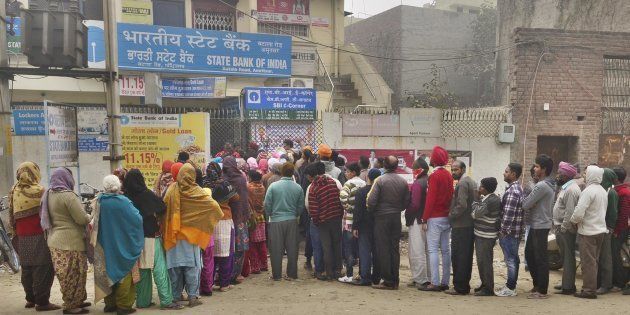
Since Prime Minister Narendra Modi's shock announcement of the demonetisation of Rs 500 and Rs 1,000 notes on the night of November 8, 2016, the goalposts for the move's success have constantly shifted. Modi and Finance Minister Arun Jaitley have variously described the scheme as meant to tackle black money, weed out counterfeit currency, attack terrorism, and increase digital payments. With the Reserve Bank of India's annual report for 2016-17 finally out, we finally have the data to assess what demonetisation did and did not do.
1. Did not wipe out black money
99% of demonetised notes have returned to banks, showing that early estimates of the huge amount of black money that demonetisation would wipe out were way off the mark. Demonetisation seems to have been a large (and expensive - the RBI says it spent twice as much on security printing this year as the last) exercise in people queuing up to return their own legal money to their own banks.
2. Did not reduce high value note dominance
Many economists agree that high value notes encourage money laundering and other illegal activities, and should be banned. Indeed, the share of high value notes in India's currency mix has been steadily rising.
But here's the thing — demonetisation has not changed that significantly, because the introduction of Rs 2,000 notes made up for the removal of Rs 1,000 notes and the slow replacement of Rs 500 notes. Rs 2,000 notes now make up more than half the value of all notes in circulation, which is a greater share than what Rs 500 or Rs 1000 notes ever accounted for in the past. The share of Rs 500 notes in the total value of currency in circulation had declined as of March 2017.
3. Did slightly increase detection of counterfeit notes
The number of fake currency notes detected did go up by 20.4% over the last year. (It is remarkable, however, that this represents less than 0.001% of the total notes in circulation.)
Of course, not all of this is attributable to demonetisation, but reflects greater vigilance. RBI data shows that the problem was across denominations; there is no reason why Rs 5 or Rs 100 notes faced extra scrutiny on account of demonetisation.
4. Did lead to an increase in electronic payments systems
RBI data shows that there was a substantial increase in use of electronic payments methods. For this chart, we've looked at card payments — debit cards, credit cards and prepaid payments instruments like mobile and online wallets.
The bottomline, however, is this: all improvements have been modest, and whether these — which were not believed to be the main aims of demonetisation — are worth the shock to the economy that demonetisation was, is highly debatable.